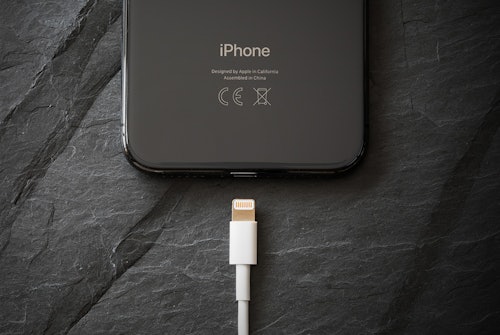- Why Do Oil Filters Need to Be Changed?
- Steps to Change Your Oil Filter
- How to Use a Plier Wrench
- How to Use a Socket or Cap Wrench to Change Your Oil Filter
- How to Use a Strap Wrench to Change Your Oil Filter
- Final Word On Oil Filter Wrenches
An oil filter wrench is an excellent tool for removing spin-on oil filters from your vehicle. It is not used to remove a cartridge-type filter, which requires a different tool. The oil filter wrench has a long handle and jaws that grasp the oil filter. When you turn the handle, the jaws apply pressure to the sides of the filter and loosen it.
You can buy an oil-filter wrench at most auto parts stores or home improvement centers. You may also be able to find one at some hardware stores and online retailers.
Why Do Oil Filters Need to Be Changed?
Every engine needs protection from foreign particles that may damage internal parts. A filter plays a key role in the lubrication system by preventing these particles from reaching the engine. When talking about oil filters, you'll often hear them referred to as sediment filters or just filters.
One of the most neglected parts of your vehicle is your oil filter. A lot of drivers will wait until the oil has reached a certain level before they begin to think about changing it. However, you should look closely at your oil filter at least 2 or 3 times a year.
There are several reasons you want to change your oil filter if it is past due. One reason is that your engine's performance will depend on it. Your vehicle needs to be adequately lubricated and not just with oil. Some cars have their own lubricants, while others rely only on their engine’s oil.
Unsure What You're Doing?
If you're not confident in your ability to change your oil filter, it's best to get a professional to do it for you. Any damage you cause by attempting to change your oil filter likely isn't covered by your car insurance and will cost you more in the long run.
Steps to Change Your Oil Filter
There are a few notable steps to take before using a wrench to change your vehicle's oil filter. You must follow each step to complete the job without hassle and damage.
1. Unscrew the cap on the oil filter with a wrench
To unscrew the cap from the oil filter, you'll need a wrench and a 10mm socket. The average length of an oil filter is about 4 inches, but you should check your vehicle's manual (usually in your glove compartment) to get the exact measurement.
Be careful not to overtighten the filter. The oil filter contains a seal designed to keep oil inside your engine. If you overtighten it, you'll risk crushing this seal while removing it, causing oil to leak out of your engine.
2. Remove the old filter from your car
After removing the old filter from the car, you want to replace it with a new one as soon as possible, or you risk damaging your engine. You may also want to keep your old oil filter as a spare in case you need it for any reason.
3. Install the new filter and tighten it
There's only one way to install a new oil filter, and that's using a wrench. Don't try to do it with pliers, a wrench that's too big for the job, or your hand—all you'll get is an oil leak (and probably an injury from those needle-nosed pliers).
Below I'll explain how to use a wrench and describe when the moment has come to call into the dealership and get their professional help.
How to Use a Plier Wrench
Plier wrenches, also called crescent wrenches, are the more advanced tools of the box-end wrench family. Most people who maintain their own cars should be familiar with plier wrenches.
Using a traditional adjustable wrench, you can use a pliers-style wrench to turn a bolt or nut that is not easily accessible. A pliers-style wrench is an excellent tool for tightening nuts and bolts in tight spaces.
- Pull the wrench handles apart until you can place the open jaws around the bolt or nut you are trying to turn.
- Turn the bolt or nut in the direction that will tighten it into position.
- Use your other hand to support the ratchet lever while tightening the bolt or nut into place if needed.
- Turn the nut or bolt in the opposite direction to loosen it if needed.
How to Use a Socket or Cap Wrench to Change Your Oil Filter
These instructions give you an idea of how to get started with an oil change process involving these two types of wrenches.
- Like with any other wrench, you will want to find the head of your bolt.
- To use a socket-style wrench, you must remove the plug first. Before you can use a cap-style wrench, you must lift the cap.
- Turn the ratchet on your socket-style or cap-style wrench in a clockwise direction to remove the oil filter.
- Once the oil filter is off, place the new one on the threaded area of the engine and secure it by turning it in a counterclockwise direction by hand.
- If you need leverage to get it tightened all the way, use your socket-style or cap-style wrench and turn it clockwise.
- Push down on the plunger until there’s no resistance to get any oil out of the filter. When that happens, wipe off any excess oil on the filter and dispose of it properly.
- When you drop your drain pan back under your vehicle to collect old oil, make sure that you have enough clearance under your vehicle to get under there and reach everything easily.
How to Use a Strap Wrench to Change Your Oil Filter
Strap wrenches, sometimes called belt wrenches, are used for various different chores, not just changing oil filters.
Strap wrenches are the perfect tool for hard-to-reach nuts, pipes, and bolts.
- Choose the right size wrench.
- Hold the wrench with one hand on the latch and one hand on the handle.
- Place the strap around your object and attach the latch.
- Turn your wrench until you tighten or loosen as needed.
Final Word On Oil Filter Wrenches
An oil filter wrench is a tool used when changing an oil filter. The 3 different types of filters are spin-on, cartridge, and screw-in style. The spin-on filters are the easiest wrenches to use.
If it’s your first time changing your own oil filter, we suggest watching a few different videos, so you get a good idea of what to expect. If you run into any problems while changing the oil filter, you should seek professional help before doing any further damage to your engine or vehicle.
While changing your own oil filter can save you money, if not done correctly, you could end up paying much more than it would have cost you to hire a mechanic to do it for you.















Comments